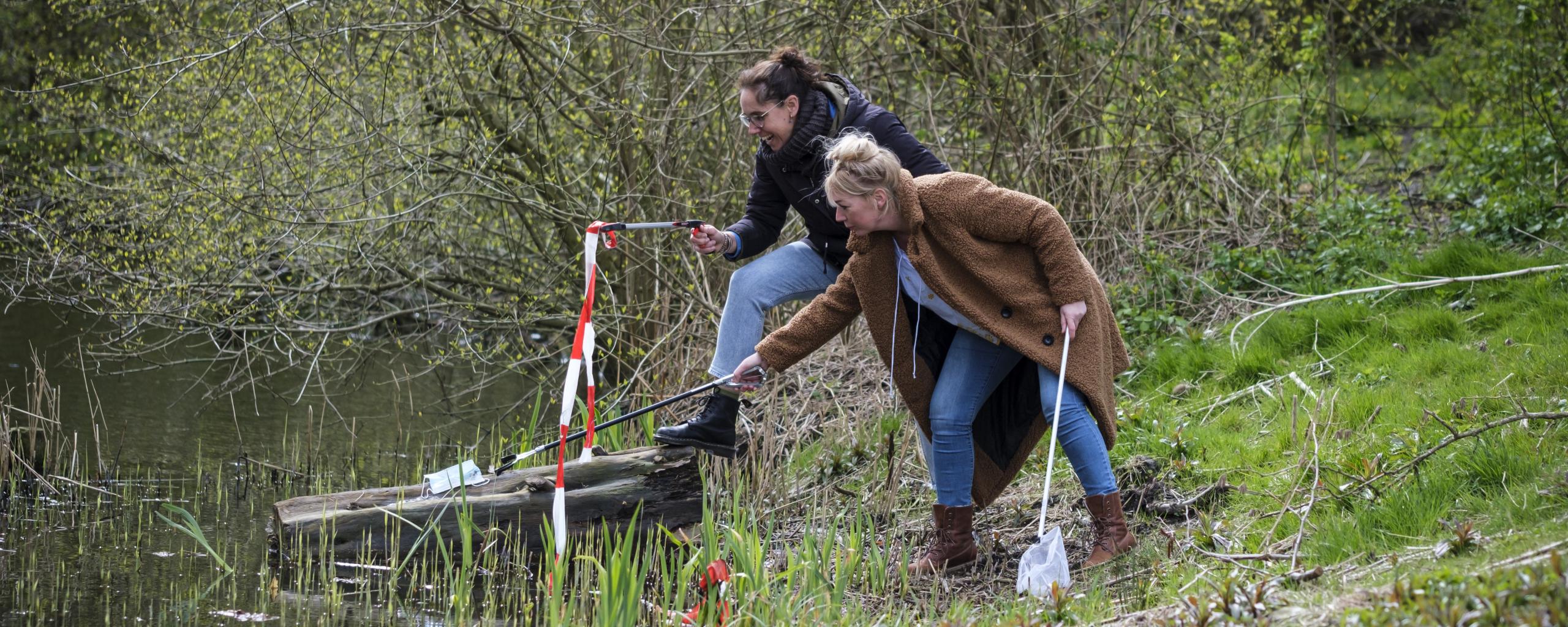Water boss tips for home!
How do you become a water boss?
Check out our tips below!
Tip 1: Remove tiles from your yard
- Remove tiles from your garden (can be found at hhnk.com/waterbosses). By replacing tiles in your garden with greenery, water can sink into the soil better in that area. This helps prevent flooding during downpours.
Our vlogger Donya takes a look at water-friendly gardens and hears helpful tips:
Tip 2: Health for a clean gutter.
Health for a clean gutter. If it becomes clogged with leaves or other debris, this can cause flooding. Clean your gutters at least once a year(wachtnietopwater.nl)
Tip 3: Health for a clean ditch
Health for a clean ditch if it borders your plot. The ditch must maintain the established width and depth for proper water supply and drainage.(https://www.hhnk.nl/slootonderhoud)
Tip 4: Clean up your garden
Clear away loose (construction) material before a storm so it does not blow into the ditch.
Tip 5: Create a water-resistant bulkhead
When it rains very heavily, there is a greater chance of flooding. Water can then flow into your home. With a water-resistant bulkhead Health you ensure that water cannot flow into the home. You place it in front of passages such as a door before flooding occurs. A bulkhead can be a tight-fitting board that fits precisely into your doorway.
Tip 6: Install a rainwater pond in your garden
Temporarily storing rainwater in your garden can be very convenient with a rainwater pond or wadi. When it rains, the water does not flow directly to the sewer but goes to the pond. This also reduces the chance of flooding in the street. The water in the pond evaporates slowly and then sinks into the ground. This is good for the water table, plants and animals. Also, a rainwater pond keeps your garden nice and cool in the summer, not a bad thing during a hot summer, right?
Of course, the storage capacity of the pond is limited, and during heavy precipitation the pond may even overflow. You can therefore consider an overflow, such as a gutter towards a nearby ditch or sewer.
Biodiversity
A pond contains lots of small insects and other animals and promotes biodiversity in your garden. Good to do your part, right? Think of gentle and steep banks and more diversity in plants, so animals can more easily enter and leave the pond.
With a pond you have a beautiful piece of nature in your garden. It is an enrichment of your garden, good for biodiversity and also useful to collect excess water in your garden.
Tip 7: Use sandbags
If flooding is imminent, you can place sandbags at openings such as a door. Also make sure to use baffles or plastic when doing this, otherwise the water will come through the sandbags.(waitnietopwater.nl)
Tip 8: No oil and grease down the toilet
In December when the days get shorter and the holidays are just around the corner, it's time again for oliebollen. Of course, you can get these delicacies from a stand but you can also bake them yourself! If you choose the latter and decide to fry them yourself in oil, do not flush the used fat down the toilet afterwards! This fat causes blockages in sewers and pumps. Keep the packaging and pour the grease back after use. On the website Frituurvet Recycle het! you can find information where you can return the oil.
Submitting fat
You can turn in frying fat at drop-off points. These can also be found in your area. Look at: Deep-frying fat Recycle it!
Tip 9: Check how high the water gets to you
Check on overstroomik.nl to see how high the water will get at your home during a flood and think about what you would do then (what stuff would you need? Who/what would you take with you? Etc.).

Tip 10: Health for an emergency kit
Put together an emergency kit, this will prepare you for emergencies or emergencies. Figure out what you need and keep the kit in the attic.
Tip 11: Do not enter a vulnerable dune area
Do not enter a fragile dune area (people go off the beaten path and trample the marram grass that prevents the dune sand from blowing away).
Tip 12: Don't dig or build on or around levees
Do not dig or build on or around levees. This can cause a levee to become unstable.
Tip 13: Report (storm) damage to levees
While walking, do you see damage to a levee after a storm over flooding? If so, report the damage as soon as possible.
